This is an automatically translated article.
Article written by BSCK II Pham Thi Van Hanh, Children's Center, Vinmec Times City International Hospital
Hand, foot and mouth disease is very common in young children and is easily contagious. This disease is very dangerous, causing serious complications such as encephalitis, myocarditis, acute pulmonary edema, and even death if not detected early and treated promptly.
1. Outline
Hand, foot and mouth disease is an acute disease, common in young children, caused by infection with enteroviruses (Coxsackie virus group A (A16), group B, ECHO and Enterovirus -EV71). cause. Manifestations are red papules and small blisters in special locations such as oral mucosa, palms, soles, buttocks, knees. The disease is more common in children under 3 years old, tends to increase from March to May and from September to December every year.
The virus is very contagious by contact with nasopharyngeal secretions, saliva, blister fluid and feces of infected children. Children with the disease are still contagious a few weeks after recovering. Kindergartens, kindergartens, places of concentrated play are at risk of disease transmission, especially during epidemics.
The disease can cause dangerous complications such as encephalitis - brain stem, myocarditis, acute pulmonary edema leading to death if not detected early and treated promptly. Infection with EV71 bacteria will cause serious complications.
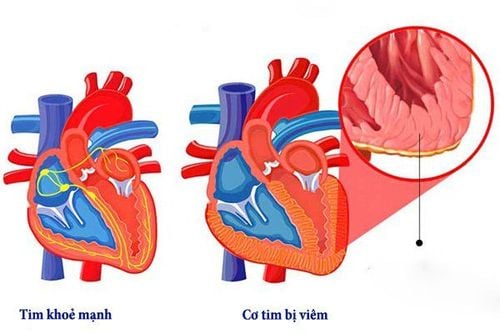
Viêm cơ tim là biến chứng nguy hiểm của tay chân miệng
2. Clinical
The disease develops through 4 stages:
Incubation period: 3-7 days. Onset stage: 1-2 days causing mild fever, fatigue, sore throat, anorexia, diarrhea. Full-blown stage: about 3-10 days causing typical skin and mucosal lesions. + Fever, fatigue, poor appetite, vomiting, children with high fever and vomiting are likely to have complications.
+ A red papule or blistering rash on the palms, feet, buttocks, knees, usually short-lived, rarely causing ulcers or superinfection.
+ Oral ulcers: red sores, blisters, 2-3mm in diameter on the oral mucosa, tongue, palate, causing mouth pain, loss of appetite, increased salivation...
+ Children often fuss, have headaches , startle.
+ If there are neurological, cardiovascular, respiratory complications (usually appear on day 2 to 5 of the disease). The child may have a brain, meninges, or spinal cord syndrome or have signs of respiratory distress.
Remission period: 3-5 days, the child recovers completely if there are no complications. Clinical forms:
Acute form: Typically according to the four clinical stages mentioned. Fulminant form: The disease progresses very quickly with severe complications such as circulatory failure, respiratory failure, coma leading to death within 24-48 hours. Atypical form: rash, atypical burning or only oral ulceration or only neurological, cardiovascular, respiratory symptoms without rash and oral ulceration.
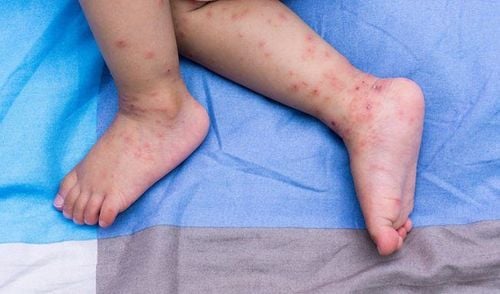
Dấu hiệu của tay chân miệng
3. Subclinical
Laboratory tests: WBC, CRP are usually normal. WBC elevations above 16,000/mm3 or blood glucose levels above 160 mg% (8.9 mmol/L) are often associated with complications. Blood glucose, electrolytes, chest X-ray when graded from grade 2b. Follow-up test when there are complications: blood gas test when symptoms of respiratory failure appear. Troponin I, echocardiography when tachycardia ≥ 150 beats/min, suspect shock or myocarditis. Cerebrospinal fluid: when neurologic complications are suspected or purulent meningitis is not excluded: protein, cells are normal or increased, monocytes predominate. PCR test EV71 from nasopharyngeal fluid, blister fluid, rectum, cerebrospinal fluid to determine grade 2b or higher or when needed for differential diagnosis: Brain magnetic resonance imaging: Only done when it is necessary to differentiate from diseases neurosurgery.
4. Complications
4.1 Neurological complications Hand, foot and mouth disease can cause dangerous complications such as meningitis, brain stem inflammation, encephalitis, encephalitis. Some manifestations of complications include:
Myoclonic jerk, startle: Intermittent 1-2 seconds, mainly in the arms and legs, easy to appear at the beginning of sleep or when the baby Lay up. Drowsiness, restlessness, unsteadiness, tremors, eyes looking backwards. Eyeball tremor. Weakness, paralysis (acute flaccid paralysis). Cranial nerve palsy. Convulsions, coma, respiratory failure, circulatory failure. Increased muscle tone (manifesting decerebral spasticity, decortical spasticity)
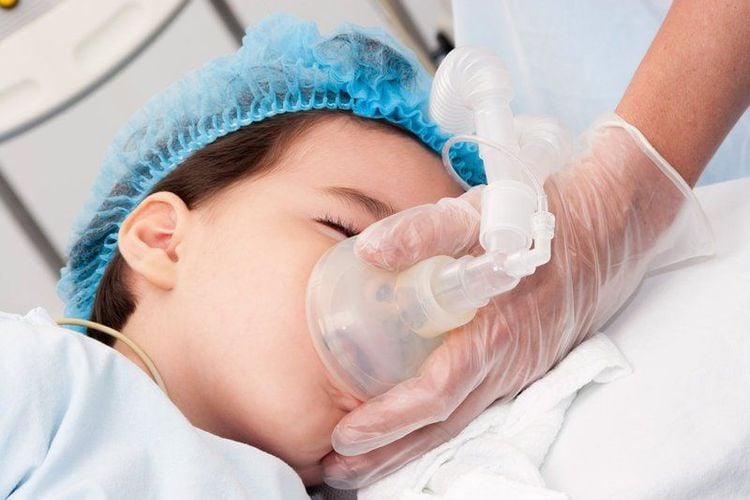
Suy hô hấp là biến chứng thần kinh của bệnh mà trẻ có thể mắc
4.2 Cardiovascular and respiratory complications Hand, foot and mouth disease causes dangerous cardiovascular and respiratory complications such as: hypertension, acute pulmonary edema, myocarditis, heart failure.
Manifestations of cardiovascular complications such as:
Fast pulse > 150 beats/min. Capillary refill time is over 2 seconds. The skin is purple, the limbs are cold and sweaty. Manifestations of vasomotor disorders may be confined to only one body region (1 arm, 1 leg,...) In the first stage, there is increased blood pressure (systolic blood pressure: children under 1 year old ≥ 110 mmHg, children from 1-2 years old ≥ 115 mmHg, children over 2 years old ≥ 120 mmHg), in the post-vascular stage, blood pressure cannot be measured. Manifestations of respiratory complications:
Shortness of breath, rapid breathing, chest indrawing, wheezing, laryngeal stridor, shallow breathing, abdominal breathing, irregular breathing. Acute pulmonary edema: dyspnea, pink foam, cyanosis, blood in the endotracheal tube or pink foam, many moist rales in the lungs.
5. Diagnosis
5.1 Diagnosis of clinical case Diagnosis of clinical case with hand-foot-and-mouth rash and/or mouth ulceration is based on clinical and epidemiological findings:
Clinical: Typical blisters on palms, mouth, soles , buttocks, pillows, with or without fever. Epidemiological factors: based on season, age, endemic area, number of children infected in the same time period.
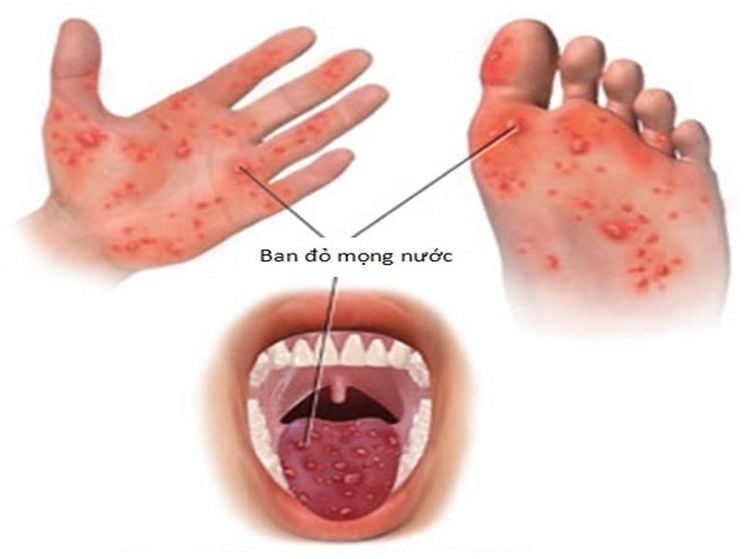
Các bọng nước tại lòng bàn tay, bàn chân, miệng là dấu hiệu điển hình của bệnh
5.2 Definitive diagnosis (with etiological testing) RT-PCR testing or isolation of pathogenic virus from patient samples.
5.3 Differential diagnosis Fever with rash, skin blisters: typhus, allergies, dermatitis, scabies, insect stings, chicken pox, meningococcal bacteremia, Dengue hemorrhagic fever. Canker sores (aphthous stomatitis - deep, exudative, recurrent sores). Encephalitis, bacterial meningitis or other viral encephalitis. Severe infections: Sepsis, septic shock, pneumonia.
6. Clinical grade
Help detect children with complications early for timely management
6.1 Grade 1 Patient only has mouth ulcers and/or skin lesions.
6.2 Grade 2 Grade 2a: The patient has signs of grade 1 and has one of the following symptoms:
History of seizures less than 2 times/30 minutes and not recorded on examination Fever for more than 2 days, or fever above 390C, lethargy, vomiting, trouble sleeping, fussing for no reason. Grade 2b : the patient has signs of grade 1 with one of the following two groups of symptoms:
Group 1: Having one of the following symptoms
Startled at examination or a history of seizures ≥ 2 times / 30 minutes. History of startling with one of the following signs: + Somnolence
+ Rapid pulse over 130 beats/min (when the child is lying still, no fever)
+ High fever ≥ 39 unresponsive to antipyretic
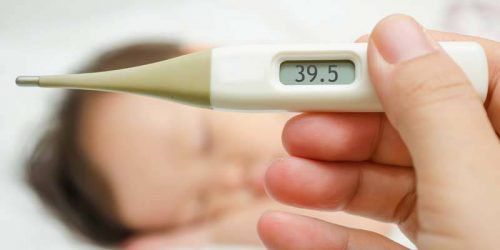
Sốt cao trên 39 độ là biểu hiện của bệnh ở giai đoạn 2b
Group 2: Having one of the following symptoms
Ataxia: tremors, tremors, unsteady walking, unsteady sitting. Eyeball tremors, crossed eyes. Weakness or paralysis. Cranial nerve paralysis: choking, voice changes... 6.3 Grade 3 The patient has the following signs:
Fast pulse over 170 times/minute (when the child is lying still, no fever). In some cases, the pulse may be slow (very severe signs). Sweating, generalized or localized cold. Increased blood pressure Rapid breathing, abnormal breathing: Apnea, abdominal breathing, shallow breathing, chest indrawing, wheezing, wheezing when inhaling. Glasgow < 10 points cause perceptual disturbances. Increase muscle tone. 6.4 Grade 4 The patient presents with one of the following:
Shock. Pulmonary edema. Cyanosis, SpO2 < 92%. Stop breathing, hiccup.
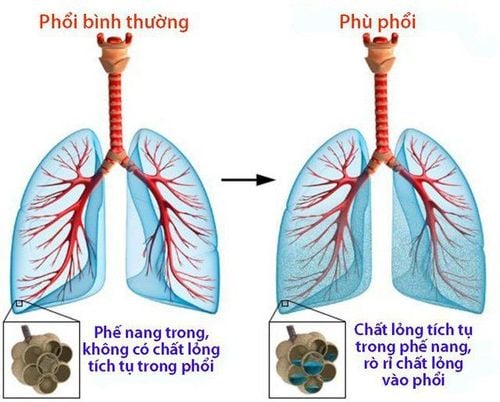
Phù phổi cấp là dấu hiệu của tay chân miệng độ 4
When the baby has the first symptoms of hand, foot and mouth disease, parents should take the child to a reputable medical facility for early examination and treatment, to avoid causing dangerous complications. As a key area of Vinmec Medical system, Pediatrics Department always brings satisfaction to customers and is highly appreciated by industry experts with:
Gathering a team of leading pediatricians: including leading experts with high professional qualifications (professors, associate professors, doctorates, masters), experienced, worked at major hospitals such as Bach Mai, 108.. Doctors All are well-trained, professional, with a mind - range, understanding young psychology. In addition to domestic pediatric specialists, the Department of Pediatrics also has the participation of foreign experts (Japan, Singapore, Australia, USA) who are always pioneers in applying the latest and most effective treatment regimens. . Comprehensive services: In the field of Pediatrics, Vinmec provides a series of continuous medical examination and treatment services from Newborn to Pediatric and Vaccine,... according to international standards to help parents take care of their baby's health from birth to childhood. from birth to adulthood Specialized techniques: Vinmec has successfully deployed many specialized techniques to make the treatment of difficult diseases in Pediatrics more effective: neurosurgery - skull surgery, stem cell transplantation. blood in cancer treatment. Professional care: In addition to understanding children's psychology, Vinmec also pays special attention to the children's play space, helping them to have fun and get used to the hospital's environment, cooperate in treatment, improve the efficiency of medical treatment. SEE ALSO:
4 grade of hand, foot and mouth disease - grade 1 need to go to hospital? Notes in the treatment of hand, foot and mouth distinguishing hand, foot and mouth disease from some similar diseases
Please dial HOTLINE for more information or register for an appointment HERE. Download MyVinmec app to make appointments faster and to manage your bookings easily.




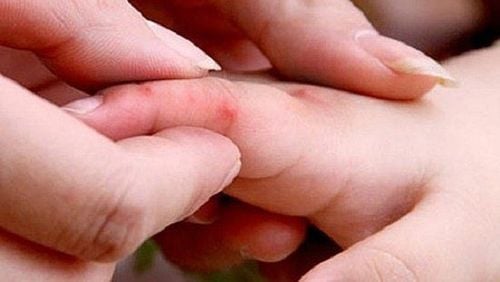
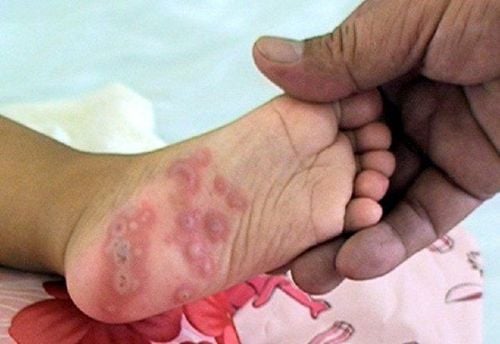
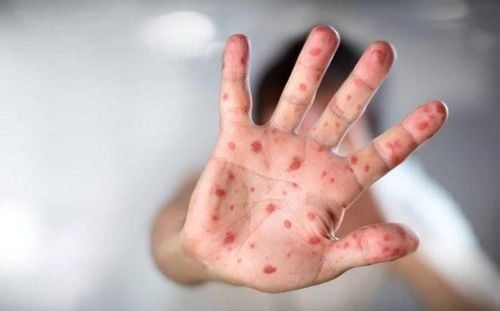
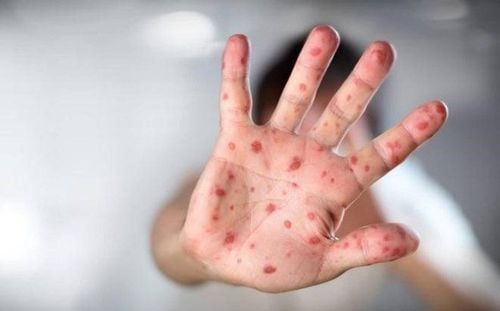
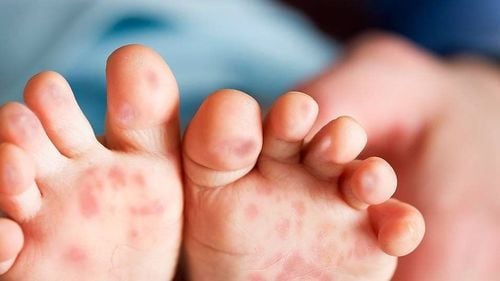
![[Vinmec - Q&A with experts] Number 02: Children's health in hot season (Part 1)](/static/uploads/small_20190723_082829_863235_Banner_FB_1200x628_max_1800x1800_png_982bf67b1c.png)



